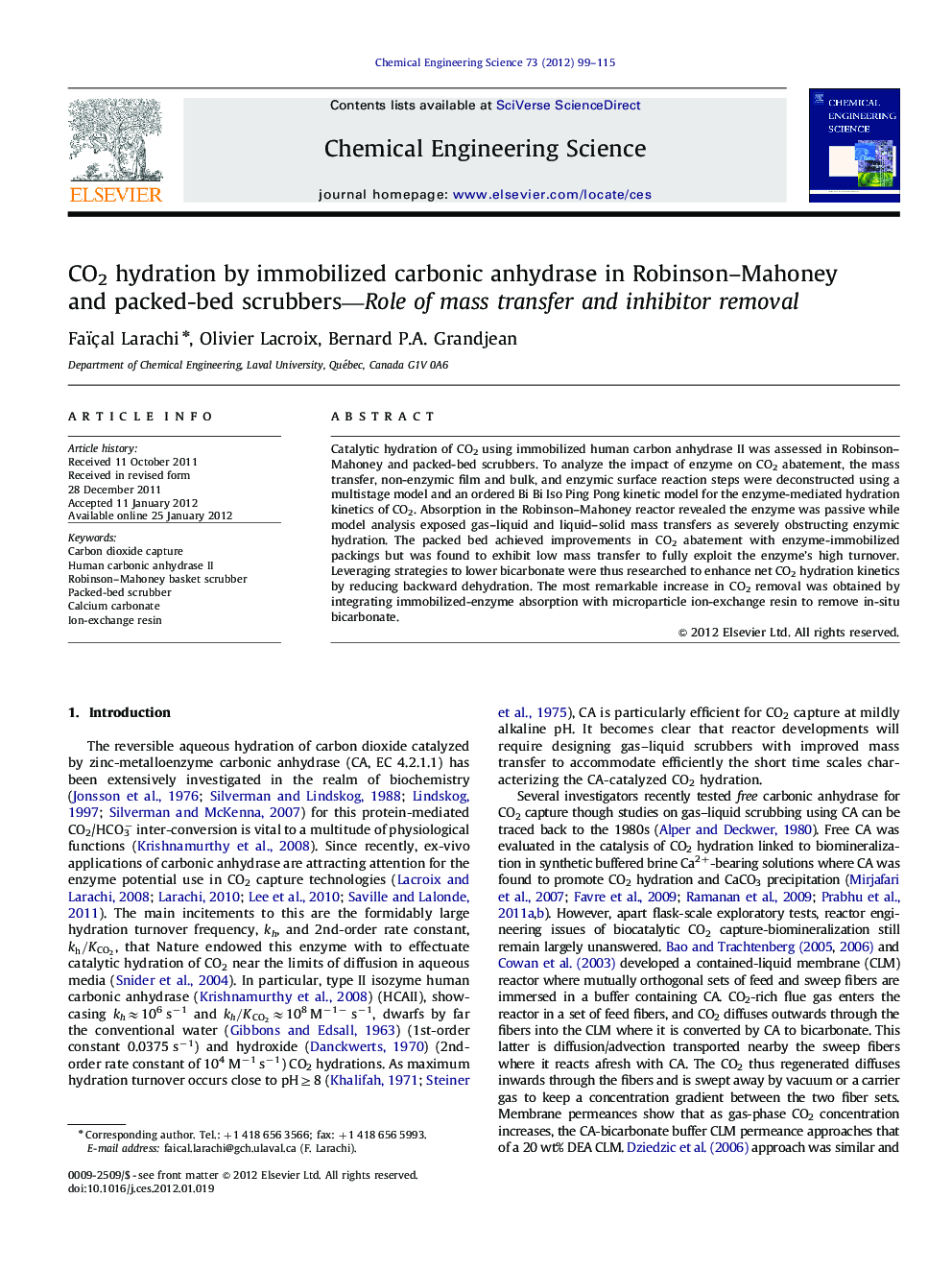| Article ID | Journal | Published Year | Pages | File Type |
|---|---|---|---|---|
| 155847 | Chemical Engineering Science | 2012 | 17 Pages |
Catalytic hydration of CO2 using immobilized human carbon anhydrase II was assessed in Robinson–Mahoney and packed-bed scrubbers. To analyze the impact of enzyme on CO2 abatement, the mass transfer, non-enzymic film and bulk, and enzymic surface reaction steps were deconstructed using a multistage model and an ordered Bi Bi Iso Ping Pong kinetic model for the enzyme-mediated hydration kinetics of CO2. Absorption in the Robinson–Mahoney reactor revealed the enzyme was passive while model analysis exposed gas–liquid and liquid–solid mass transfers as severely obstructing enzymic hydration. The packed bed achieved improvements in CO2 abatement with enzyme-immobilized packings but was found to exhibit low mass transfer to fully exploit the enzyme’s high turnover. Leveraging strategies to lower bicarbonate were thus researched to enhance net CO2 hydration kinetics by reducing backward dehydration. The most remarkable increase in CO2 removal was obtained by integrating immobilized-enzyme absorption with microparticle ion-exchange resin to remove in-situ bicarbonate.
► Catalytic hydration of CO2 using immobilized human carbon anhydrase II. ► Ion-exchange resin in-situ HCO3− removal enhanced enzymic enzyme CO2 absorption. ► Ordered Bi Bi Iso Ping Pong kinetic model for enzyme hydration of CO2.
